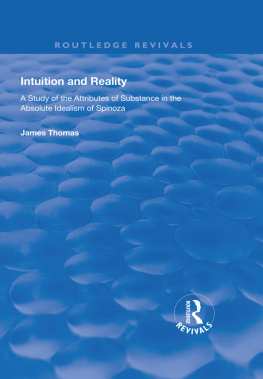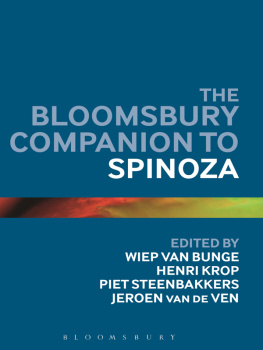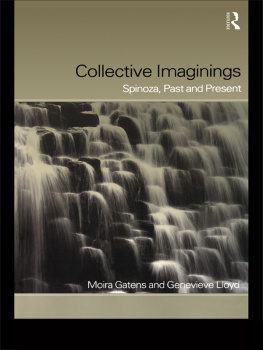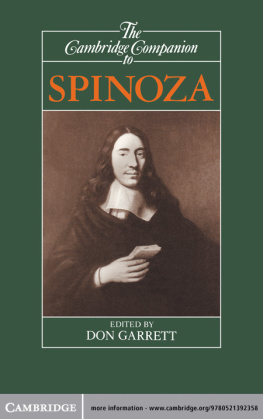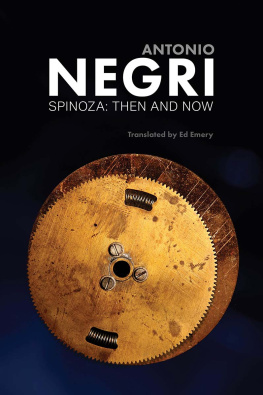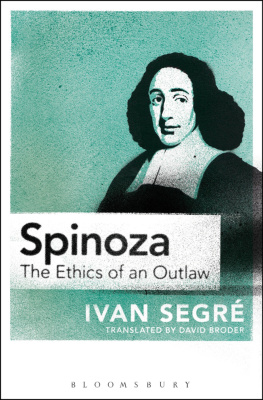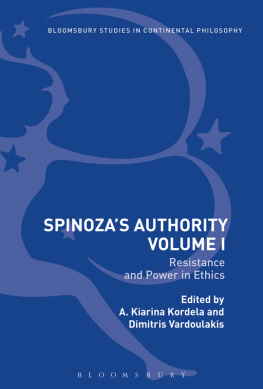THE WAY OF SPINOZA AND GURDJIEFF
Lewis Almeida
Copyright 2022 Lewis Almeida. All rights reserved.
Almeida Publications
Santa Monica, California
WayofSpinoza.com
About the case studies in this book: I have changed the names of my students out of respect for their privacy.
Cover and interior design by Philip Wyeth.
www.philipwyeth.com
TABLE OF CONTENTS
INTRODUCTION
Many books have been written about Baruch Spinozas philosophy. University professors often find themselves overwhelmed as they hurriedly grasp bits and pieces from the various Spinoza texts. But collecting random fragments is no way to go about understanding the core teachings of such an important thinker and thus their students also suffer.
While studying under the late Gregory Grover for many years, I internalized the complex ideas that characterize Spinozas language. His towering philosophy teaches us the possibility of coming to a new character. His Ethics when digested, assimilated, and embraced can be understood when we dedicate our entire being: mentally, emotionally, and physically.
Freedom from emotional bondage is possible when we learn to apply our understanding. It is through examining our emotions that we begin to strengthen the minds understanding. Eventually, as our mental strength increases, it is also possible to understand the laws and nature of God non-anthropomorphically.
Spinozas ideas should be approached not as mere written words, but as a living reality which offers us the tools of reason and intuition. With Spinozas philosophy communicated by the right teacher as a guide, our lives can be changed for the better.
A new character is born, a character that is free from the negative emotions of fear, hate, and anger. A knowledge that we are part of the wholeness of Nature or God.
In this work of improving our understanding, we develop our own authority to gain a sense of self and self-approval. When we are less concerned about the opinions of others, it is also possible to become a master of ones emotions.
Desire to understand and loving our efforts in wanting to improve the clarity of our thinking is possible. The mind knows and tastes its clarity and its connection with the Divine. Therefore, true happiness is knowing oneself through reason and intuition and having a direct commune with Her Divinity.
This book examines real case studies to give insights into the process of learning, understanding, and awakening the mind. It is for the individual who aspires to something beyond the ordinary, who seeks happiness, a purpose, and a meaningful life.
Now, let us begin the journey together as students of Spinozas great works
-Lewis Almeida
Santa Monica, CA
January 2022
KNOWING ONESELF
Over two thousand years ago, Socrates proclaimed, To know oneself is the highest level of knowledge. Likewise, Spinozas Ethics expresses the importance of awakening our intelligence. The process of acknowledging and understanding our emotions by using the tools of reason and intuition can lead us to freedom, peace, and fulfillment.
However, to understand Spinozas philosophy, an emotion of genuine desire to understand and the love of our efforts is necessary. We must learn how to apply his knowledge to improve our nature that is resistant to change. Applying Spinozas methods with an open heart and pure intention has the potential to transform your life.
The goal and purpose of Spinozas work was to comprehend the union that exists between the human mind and the whole of nature. My role as teacher is to guide seekers through this process of coming to see and understand that great union, and in turn connect with the wholeness of Nature.
An important part of grasping this knowledge begins by examining our nature. We must ask, how are we affected emotionally by the daily challenges and events that trigger us? It is in this examination; we begin to learn how to see our nature without judgments. Our emotions tell a story about how we see lifes challenges and disappointments. This process is learning how to see objectively with an open mind.
The question often arises: Why does God allow suffering? Why is there so much suffering in the world?
Spinoza explains that once we understand the nature of suffering itself, our own suffering ceases.
Consider this sequence: Suffering is pain. It is a feeling of powerlessness, helplessness, emptiness, and not knowing what to do. This painful condition is a weak state of being which causes an inability to act decisively or face ones problems. When lifes challenges demand more from us than we can give, we may brood angrily, run away, or simply procrastinate.
Man can only free himself after he understands the true nature of his pain and suffering. This is achieved through the process of strengthening his intelligence.
The following case study is an example of how to work through our pain and confusion to gain understanding as well as more control over our lives.
BETTY CASE STUDY
Betty came to me wanting to know more about Spinoza; thinking that his ideas were clear and promising. Betty wanted to come to a deeper sense of self with more clarity and truth.
I explained that to begin to understand Spinozas language, we must start with where we are. In reality, we are egocentric; meaning that we live in an ego state. This is our identity; we have a personality that expresses the ego. The ego uses the memory for its knowledge. The knowledge that we acquired since infancy.
George Gurdjieff, an early twentieth century Russian philosopher and mystic, explains that man is asleep and the goal is to awaken the greater part of our mind that is seldom used.
Our true intelligence operates in the reality of the now. The daily problems we face are opportunities for us to grow as our intelligence improves and strengthens its understanding. The goal and purpose are to live from this intelligence in an enlightened state of being. However, it takes time, patience, and dissatisfaction with where you are, and the desire for something that will give a deeper meaning and purpose.
Bettys problem was she did not understand why she was so angry. On one occasion, while she and her boyfriend Rick were at a restaurant, Betty saw that he was flirting with other women while they were having dinner.
She felt pain, hate, and anger. I suggested that she keep a journal and write about what drew her to be involved with Rick. Because first, she needed to acknowledge and articulate her desire what was it that she wanted?
Betty revealed that she wanted to be loved and appreciated. I suggested that she accept she was in pain, to be with it and surrender to the feeling rather than run from it.
Facing our emotions in this direct way can trigger and awaken our true intelligence. This intelligence is different from our normal ego-intellect which addresses commonplace situations while we go about our daily lives.
This intelligence, when awakened, wants to improve its understanding through truth and clarity. It is the active part of the mind that wants to understand, and it is in the understanding that we gain a new sense of self through the power of clarity.
There are two aspects to the mind, active and passive. The active part expresses clear ideas and endeavors to understand. The passive part is comprised of confused and fragmentary information; it depends on memory and an unconscious automatic response state.
Your background and the environment you grew up in automatically conditioned you to accept so many things about the world without ever questioning them. The memory contains set patterns of how to behave and handle problems. If our childhood was spent in a fearful environment, its logical that we would constantly be worried, envious, have feelings of inferiority, and always compare ourselves to others.


